
views
X
Research source
In fact, if you live in an area with a rainy season, it may be nearly impossible to keep the toads out; as soon as you remove some, more will enter your yard. Nonetheless, you can take steps to make your yard less attractive to toads, as well as physically deter them. If you need to euthanize an invasive or poisonous species, there are a few techniques you can try.
Making Your Yard Less Attractive to Toads

Turn off the outside lights. Insects are attracted to light, and toads and frogs will show up when there are insects around. Make sure the lights are off unless you're outside, and you'll reduce the insect population. Also, put shutters, blinds, or curtains on your windows so less light leaks out from inside your home.
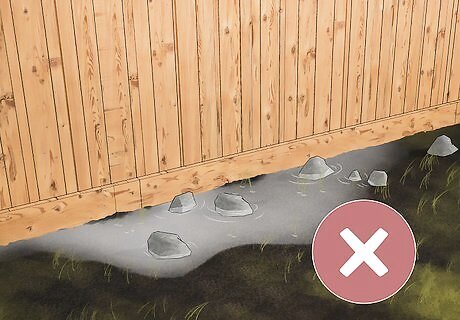
Get rid of water sources. Water sources, like small ponds and fountains, will attract toads to your yard, particularly during breeding season. To help reduce the attraction, take out these water features. Also, pour off any standing water in buckets or other areas. Even birdbaths that are low to the ground may attract toads. Toads like to lay eggs in the water during breeding season. Keeping the water moving with a fountain or waterfall will reduce mosquitoes, a popular attraction for toads. However, toads may still venture into your yard to lay eggs in the water.
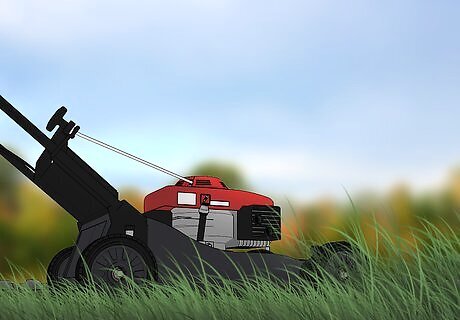
Mow the lawn to keep it dry. Mowing the lawn often will keep the insect population at bay, which in turn will deter toads. A short lawn also gives toads fewer places to hide. Try to mow at least once a week in wet areas.

Remove outdoor pet food bowls. Toads are attracted to dog and cat food, so if you leave food out, you could be attracting toads. If you need to feed your animals, only leave the food out for a short while. Pet food can also attract insects, which the toads enjoy.

Add a silt fence around your yard or water features. Make a fence that's 2 ft (0.61 m) high and 1 foot (0.30 m) below the ground. Bend the bottom of the fence outward to make it more difficult to dig under it. A silt fence is a cheap, temporary fence used to keep out sediment.
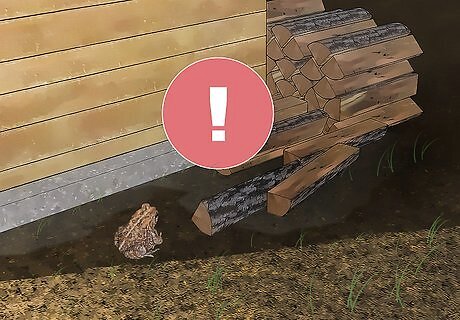
Clear out dark, covered areas that toads like to use for hiding spots. Toads like dark and damp areas, away from the sun. Look around your yard for anything they could hide under, such as old pots, propped-up boards, and any other debris you may have around. Eliminate these areas to give toads fewer places to hide. They also like low hedges and other groundcovers, so take those out if you want to deter toads.
Removing Toads Directly

Pay neighborhood kids to catch the toads. If you don't have that many toads (and they aren't poisonous), this technique may work. Have the kids take them to a local pond or other nearby body of water where they can live out their happy lives. Often, paying kids per toad is an effective method.

Scoop the eggs out of water features during breeding season. If you have a water feature, you may notice small eggs floating in it from March to June. You can simply put the eggs on a dry surface, and they won't hatch. The eggs will look a little like caviar, small and dotted. Some will be white on one side and black on the other, and they will be connected in strings by a gel-like material.

Spray saltwater in areas you don't want toads. Mix about 1 part salt with 4 parts water. Stir until the salt dissolves in the water, and then take it outside to spray where you don't want toads. It will burn their feet a little, and get them to move on. However, don't spray saltwater near plants, as it can kill them.
Euthanizing Invasive and Poisonous Species
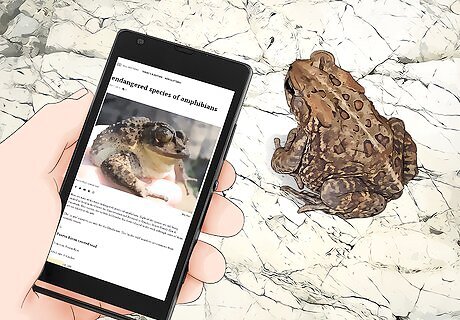
Identify the toad first to make sure it's not endangered. Many amphibians are on the endangered list, and it's illegal to euthanize these species. Check online for the local species in your area, and research which ones are endangered. Invasive species are ones that are not native to the area, cause destruction, and deplete the natural resources for the native species. In some cases, it can be good to euthanize these species so native species thrive.
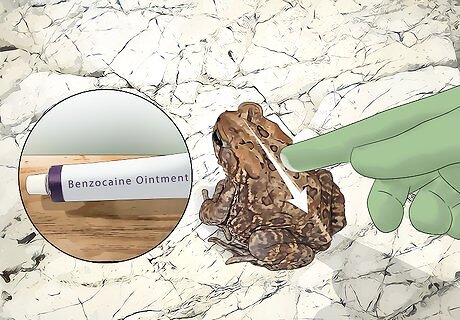
Euthanize toads with benzocaine ointment and cold. While wearing gloves, spread about 1 inch (2.5 cm) of ointment down the toad's spine. After about 40 minutes, it should be nearly dead, at which point, you can place it in the freezer for 3 days to fully euthanize it. Once the toad is completely dead, place it in the trash in a plastic bag or simply bury it deeply in your backyard.
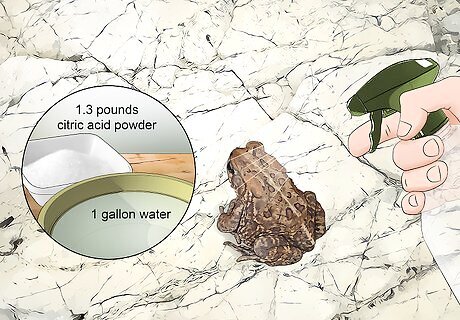
Try a citric acid solution. Add 1.3 pounds (0.59 kg) of citric acid powder to 1 gallon (3.8 L) of water, which is a solution of about 16%. Spray the mixture on the toads, and it will typically euthanize them. You can find citric acid online or at gardening stores. While it won't do much damage to your plants, you may want to spray the plants with clean water 1 hour after applying the solution to the toads.

Avoid inhumane euthanization techniques like pesticides. While pesticides are harmful to toads and may kill them, they typically work slowly, if they kill the toads at all. Similarly, while caffeine may kill frogs, using coffee on them isn't a good idea because it may work too slowly.




















Comments
0 comment